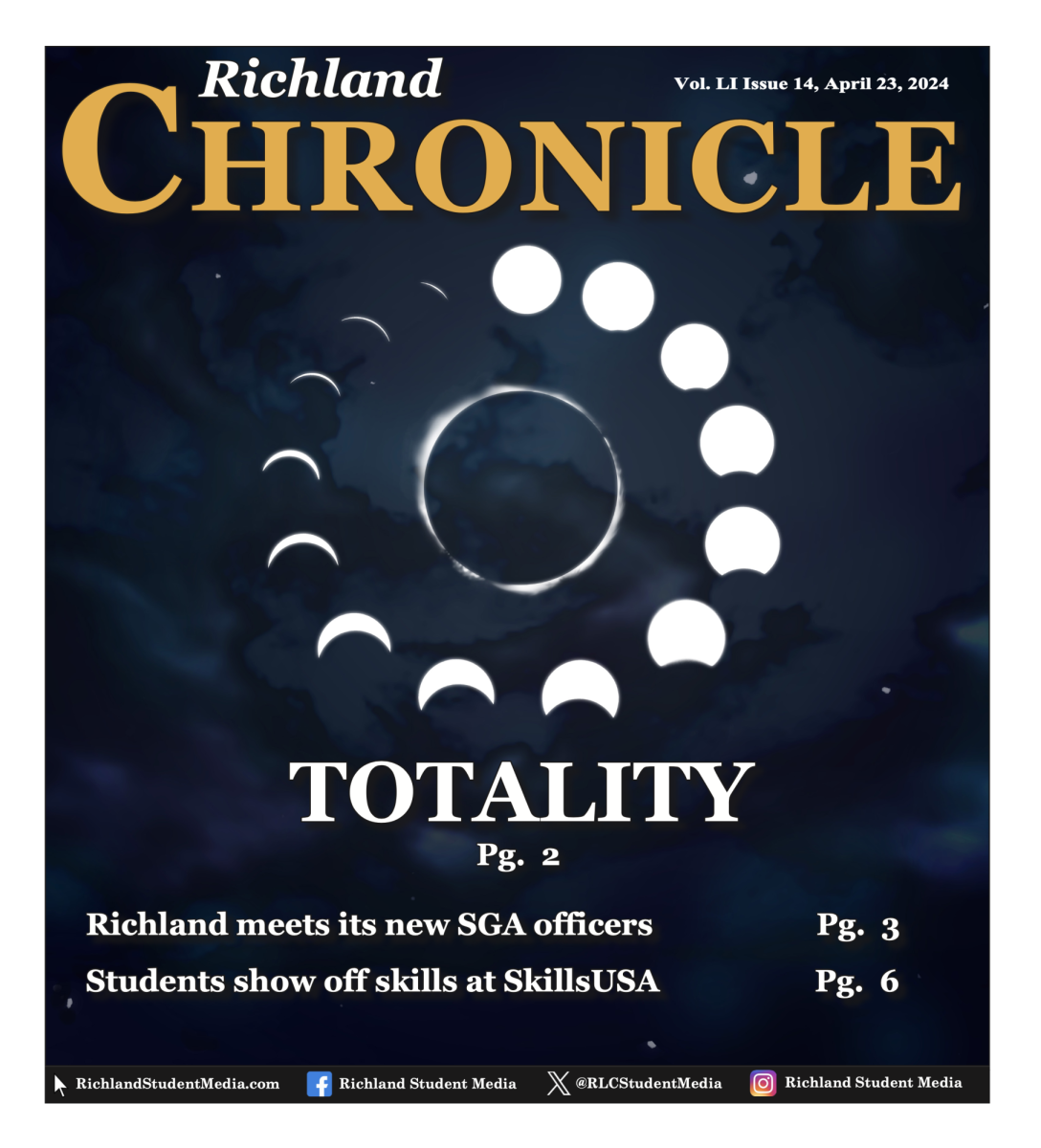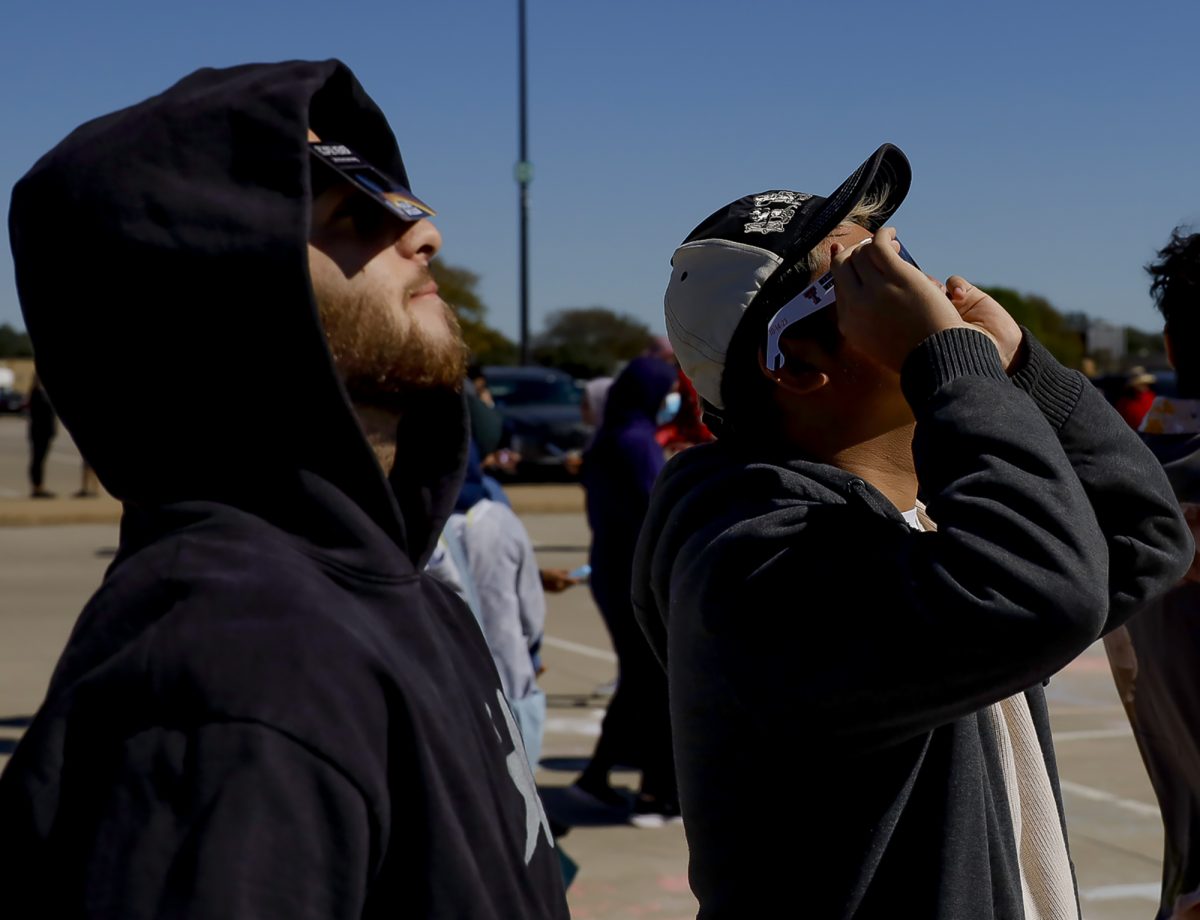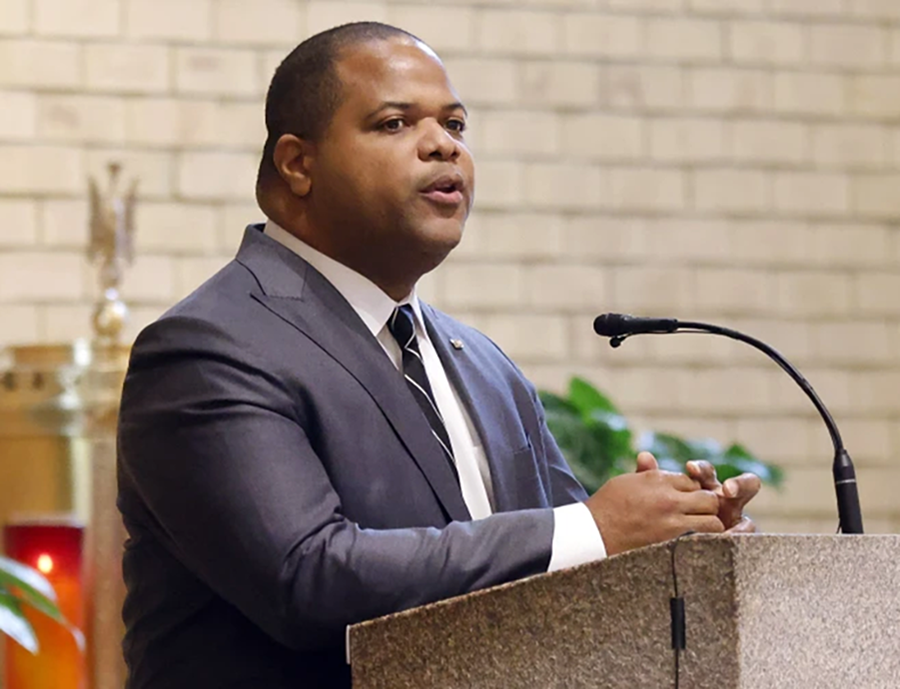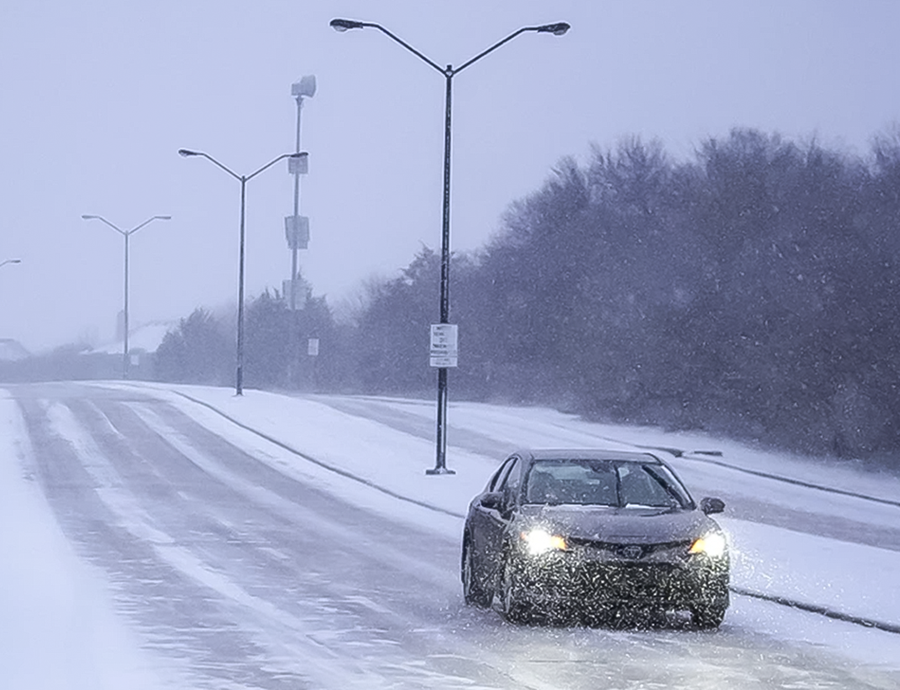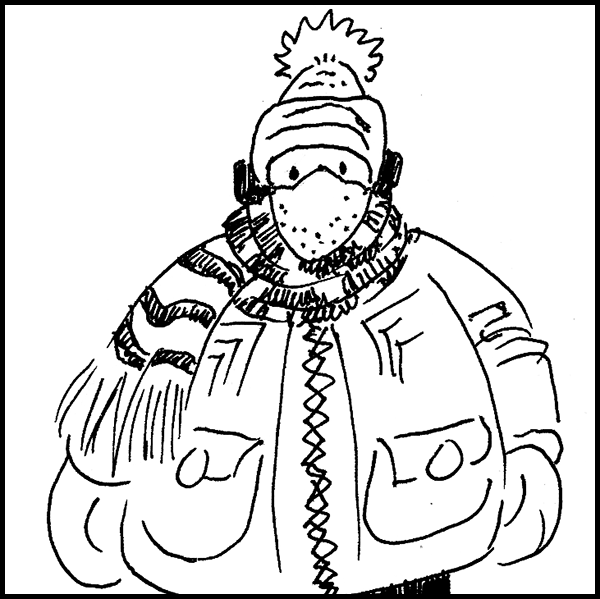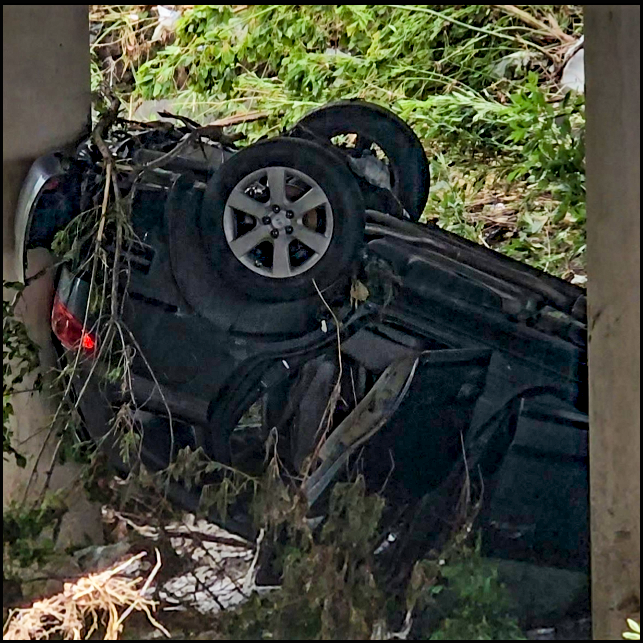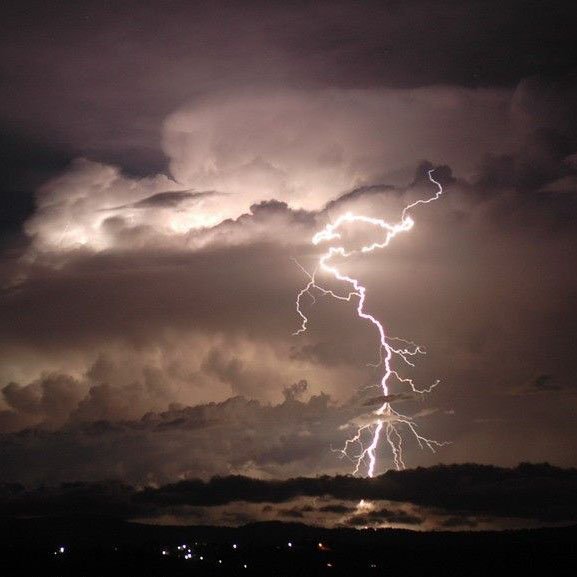An ambulance passes by an abandoned construction vehicle on Audelia Road on Feb. 3. Staff Photo Alex Ortuno
Managing Editor Alex Ortuno
Despite not burying the state in snow, the Metroplex and surrounding area faced a winter storm that brought a combination of both ice and snow to the region.
On Jan. 28, the National Weather Service in Fort Worth published a graphic predicting a chance of winter precipitation by Feb. 3. While it wasn’t guaranteed at the time that winter precipitation was coming, it was still possible.
Within days showing updated forecasts of what was to be of a winter storm, a Winter Storm Watch was placed for the majority of North Texas Jan. 31 as it soon turned into a Winter Storm Warning by Feb. 2 for the entire region.
Jennifer Dunn, warning coordination meteorologist with the National Weather Service in Fort Worth, said the Metroplex and surrounding areas faced different accumulations and impacts from the storm.
“We had higher snowfall totals west of the DFW Metroplex but to the north and east of the Dallas area and Dallas County, that’s where we had our higher ice accumulations. There was variability in ice accumulation and in snowfall total across the area,” Dunn said.
Temperatures across the North Texas region were mostly the same with some reaching into the teens, Dunn said.
As the sight of winter weather made many remember about the “Big Freeze” or the winter storm from 2021 that brought snowfall across the state, this one was very different in a variety of ways.
“Compared to last year winter’s storm, this event most importantly, it did not last for as many days of February of 2021. We were entrenched in below freezing temperatures for up to a week in 2021. This event lasted just two to three days so the amount of time that we spent with the cold temperatures was not as long,” Dunn said.
Higher accumulations near the Metroplex were in Collin and Hunt County, Dunn said. Snow and sleet accumulations across North Texas varied. According to the National Weather Service, the Metroplex received around 1.7 inches of precipitation while further west, Eastland County received up to 5 inches. Toward the south in Waco, only 0.3 inches of precipitation was measured.
As residents return to regular activities after hunkering down from the storm, winter weather can be expected to be an annual event, Dunn said. “We average about one to two winter weather events each year. Most of them do tend to happen somewhere in late January through February time frame so it’s not common for us each year to have at least one winter event of some kind,” Dunn said.
Accumulations from weather events have been mostly on a smaller scale in North Texas than snowstorms from the Midwest though, according to Dunn.
“The most part if you look at accumulations, I would say majority of our winter weather events are on the smaller scale because accumulations are significantly less, especially when you look at the s now amounts that may happen in the plains, the northern plains and the Midwest,” said Dunn. The region receives more ice than snow but can have greater impacts, despite accumulation can be very little, Dunn said.
Ice accumulation can be dangerous in comparison to snow as it causes hazards for travelers, power lines and buildings, Dunn said.
“A lot of the things because we deal with more ice than we do snow, and that’s much more difficult to travel on, and the accumulations on trees and power lines and structures can have a significant impact in that regard.”
While the National Weather Service issued advanced warnings and messages to residents across North Texas to prepare for the winter storm, the City of Dallas was also preparing in their own ways. Rhonda Simpson, public information officer for the Emergency Operations Center for the City of Dallas, said there were several efforts made to prepare residents for the winter storm.
“We messaged early to individuals to prepare by getting emergency supplies together, wrapping pipes and safely using alternative heating sources. We identified and messaged out warming locations for residents who needed temporary relief from the cold,” Simpson said.
As to the homeless residents of Dallas, the Office of Homeless Solutions set up temporary shelters for those dealing with homelessness and for those who did not have shelter.
Other efforts were done in terms of preparing roads from the storm as well.
“Public Works and Dallas Water Utilities worked together to sand streets and bridges through the storm. Scouting began about 6 hours before the freezing weather began and operations ran through Saturday morning,” Simpson said.
Departments from the City of Dallas also had staff and technicians on standby for any situation that needed help, Simpson said.
As mentioned before with the impacts being less than intense in comparison to the “Big Freeze” from 2021, there were still some impacts to the City of Dallas, despite the intensity of the storm being less than that of last year.
“The area ended up dealing with less snow and ice than we did 2021. As with any winter storm, there were a number of motor vehicle accidents and about a dozen burst pipe calls to DWU. There were also some structure fires related to the storm. But overall, this was much better than 2021. Most did not lose power so could easily stay in their homes. This event only lasted about 48 hours, which is a much shorter time frame than 2021, and our departments were monitoring the situation constantly,” Simpson said.
As for electricity outages, only localized power outages were caused by ice on power lines and fallen tree limbs. ONCOR, an electric utility company in Texas, had crews available across the city to address any situation, Simpson said.
No large-scale cleanup efforts were made to their knowledge, Simpson said.
While North Texas is still no stranger to winter weather, the City of Dallas will be using this recent winter weather to prepare for any similar future events.
“We always take things we learn from events like this storm and apply them to future plans. There’s no way to know exactly how an event will play out, and though you can plan well, there’s always something that is different that we can learn from,” Simpson said.
As the winter season comes nearing an end by mid-March with the spring equinox, Dunn suggests residents should stay aware for if any changes to the forecast include inclement weather, especially as the spring season is known for bringing severe weather to the region.
Simpson suggests residents of the City of Dallas to sign up for the DallasAlert program, which helps residents to get early warning notifications in the event of an emergency.
“The City of Dallas developed the DallasAlert program to enhance the emergency notification system. DallasAlert allows for additional communication options including cell phone and email. This is an OPT IN system. The DallasAlert system will only send messages if you sign up and will only use your information in case of emergency,” Simpson said.


